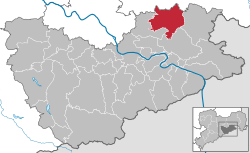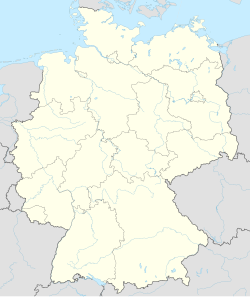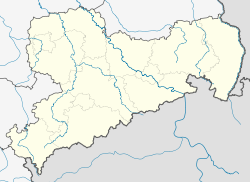Top Qs
Timeline
Chat
Perspective
Stolpen
Town in Saxony, Germany From Wikipedia, the free encyclopedia
Remove ads
Stolpen (German pronunciation: [ˈʃtɔlpn̩] ⓘ; Upper Sorbian: Stołpin, pronounced [ˈstɔwpʲin]) is a town in the district of Sächsische Schweiz-Osterzgebirge, in Saxony, Germany. It is a historical town, that grew at the foot of the Schloßberg with the castle Burg Stolpen.
Remove ads
Burg Stolpen
Burg Stolpen is a castle built on top of the Schloßberg. The first defensive works were built about 1100 and it was first documented in 1222. Owned by the Bishop of Meißen for nearly 350 years, it passed to the Electorate of Saxony and was expanded in Renaissance style. In 1675 it was further expanded as a fortress. Anna Constantia von Brockdorff, Countess of Cosel, was imprisoned in the castle from 1716 until her death in 1765. The castle fell into disrepair towards the end of the 18th century. It became a museum in 1875, and has been partly restored since then.[3]
Remove ads
Schloßberg
Schloßberg is a hill just to the south of the town formed of prominent basalt columns. It is the formation referred to by Georgius Agricola when he coined the term basalt.[4]
Historical population
|
|
* over 10 years old

Twin towns – sister cities
Stolpen is twinned with:
 Hilzingen, Germany
Hilzingen, Germany Amöneburg, Germany
Amöneburg, Germany Garching an der Alz, Germany
Garching an der Alz, Germany Jockgrim, Germany
Jockgrim, Germany Sipplingen, Germany
Sipplingen, Germany Sloup v Čechách, Czech Republic
Sloup v Čechách, Czech Republic
Notable people
- Walter von Boetticher (1853–1945), historian and physician, was a general practitioner at Stolpen
- The Doll Family, a circus sideshow act, were born in Stolpen
- Christian Friedrich Henrici, also known as Picander, Bach's librettist (St Matthew Passion's text was written by him) was born here.
References
External links
Wikiwand - on
Seamless Wikipedia browsing. On steroids.
Remove ads






